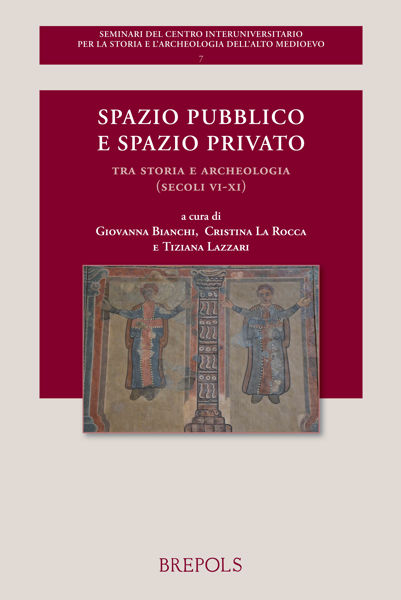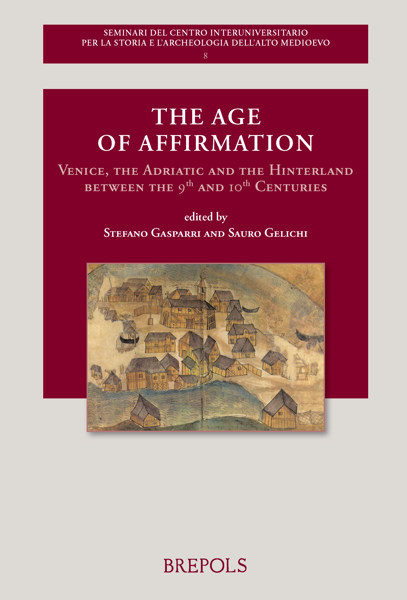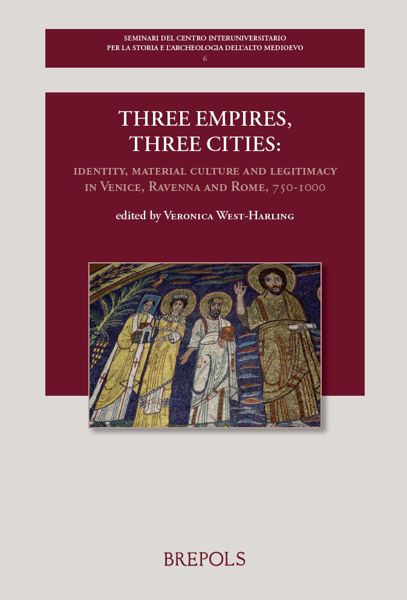
Urban Identities in Northern Italy, 800-1100 ca.
Maria Cristina La Rocca, Piero Majocchi (eds)
- Pages: 496 p.
- Size:156 x 234 mm
- Illustrations:20 b/w, 19 col.
- Language(s):Italian, English, French
- Publication Year:2015
- € 70,00 EXCL. VAT RETAIL PRICE
- ISBN: 978-2-503-56547-7
- Paperback
- Available
- € 70,00 EXCL. VAT RETAIL PRICE
- ISBN: 978-2-503-56710-5
- E-book
- Available
A first approach to urban characteristics in Northern Italy (800-1100ca)
« In conclusione, il volume costituisce un invito alla pluralità e alla complessità. » (Paolo Tomei, sugli Studi Medievali, 1, 2017, p. 403)
“(…) this is a notable interdisciplinary (if mainly historical) volume that provides multi-faced considerations of what it involved to belong to an urban community in 9th to 11th century northern Italy (…) The book is thus of interest for a broad audience of historians and archaeologists working on various parts of the early medieval world.” (Hajnalka Herold, in Society of Medieval Archaeology, 61/2, 2017, p. 453)
Cristina La Rocca teaches Medieval History at the University of Padova. Her main fields of interest are early medieval history, early medieval funerary practices, and gender history. Her recent publications include Tempi Barbarici, Roma 2012 (with Stefano Gasparri) and the Italian translation of the building Variae of Cassiodorus (Roma 2015).
Piero Majocchi had collaborated with Cristina La Rocca at the University of Padova (Italy) and with Serena Romano at the University of Lausanne (Switzerland) in different research in Early, Central and Late Medieval History. He has published "Pavia città regia. Storia e memoria di una capitale medievale" (Roma, 2008) and is publishing "La seta di Cangrande. Rituali funerari e distinzione sociale in Italia nel medioevo (ca. 500-1450)" with the Istituto Storico Italiano per il Medioevo, Roma.
The book aims to reflect on the characteristics of urban centers of the kingdom of Italy between the ninth and the eleventh centuries, filling a noticeable historiographical gap. The cities in Northern Italy in this period have not yet been analysed with a multidisciplinary approach, able to outline their specific and distinctive characteristics and to relate this particular period both to the post-Roman past and also to the following “Communal” phase. Urban identities are examined from different points of view: from a political perspective, in relation to the dialectic between center, periphery and to the border areas of the kingdom; from an institutional and territorial standing point, analyzing the structures of local power and public territorializations; according to social and military history approaches, highlighting the continuities and transformations in comparison with former and following centuries. The issue of urban identities is also investigated archaeologically, in relation to urban development and to topographic transformations, and culturally explored, examining mutual exchanges between the cities of the kingdom. Another aspect rarely addressed by previous literature is ultimately to compare the results of this research on the Italic kingdom with studies on the Transalpine Carolingian and post-Carolingian empire and kingdoms, outlining common trends, but also specific peculiarities
Cristina La Roccca e Piero Maiocchi, Introduction
1. Strutture politiche e centri urbani: dialettiche centro-periferia
Stefano Gasparri , L’identità dell’Italia nordorientale e Venezia. Dalla tarda età longobarda al regno di Berengario
Paola Guglielmotti, Marches, marquesses and bishops in northwestern Italy: the construction of urban features from the periphery towards the centre
Francesco Borri, Towns and Identities in the Italian Eastland: 790-810
François Bougard, Du centre à la périphérie: le « ventre mou » du royaume d’Italie de la mort de Louis II à l’avènement d’Otton Ier
2. Identità urbane individuali e di gruppo
Piero Majocchi, L’esercito del re e le città: organizzazione militare degli eserciti urbani in Italia settentrionale (VIII-XI sec.)
Andrea Augenti, Identità urbane in italia tra IX e XI secolo: un approccio archeologico
Gianmarco De Angelis, Cittadini prima della cittadinanza. Alcune osservazioni sulle carte altomedievali di area lombarda
Antonio Sennis, Monasteries and cities: cultural encounters
3. Rappresentazioni e realtà materiale della città
Veronica Ortenberg West-Harling, Proclaiming power in the city: the archbishops of Ravenna and the doges of Venice
Sauro Gelichi, Venice in the early middle ages. Th e material structures and society of ‘civitas aput rivoaltum’ between the 9th and 10th centuries
Laura Pani, Manuscript Production in Urban Centres: Graphic and Textual Typologies
Massimiliano Bassetti, I graffi ti dell’abside nord di S. Zeno: uno spaccato della società veronese del secolo X
4. Il lessico politico delle identità urbane
Tiziana Lazzari, Città e territori: l’articolazione delle circoscrizioni pubbliche nell’Italia padana (secoli IX-XI)
Giorgia Vocino, Caccia al discepolo. Tradizioni apostoliche nella produzione agiografi ca dell’Italia settentrionale (VI-XI secolo)
Maddalena Betti, I centri urbani nella regione medio-danubiana (VII-IX secolo): la rappresentazione della «Conversio Bagoariorum et Carantanorum»
5. Conclusioni
Alessio Fiore, Le città nel gioco identitario dell’Italia settentrionale (IX-XI secolo)
Igor Santos, Early medieval urban identities in northern Italy: a conclusion
6. Photo Plates
7 Index of names




